Mount St. Helens In May
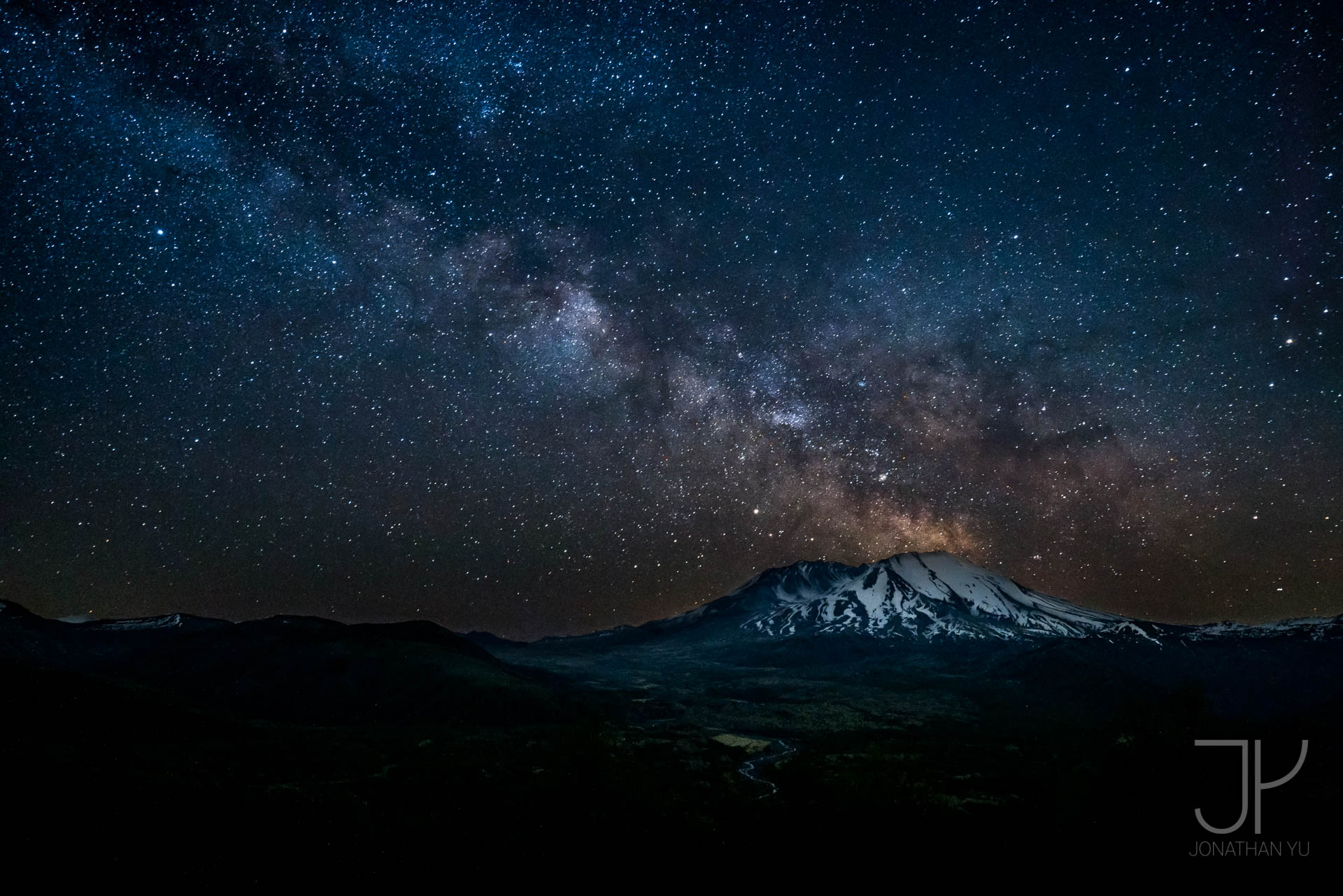
This year marks the 38th anniversary of the last major eruption of Mount St. Helens. 38 years since the northern face of Mount St. Helens was blown apart, much of the surrounding valley is still recovering as nature slowly reclaims the scorched earth created by the eruption. Last week I made a short one night trip to the north side of the park. Although still early in the season with the road only open up to Coldwater Lake, I figured I’d make a trip to beat the summer crowds and enjoy a new moon and take the opportunity to do my first astro photos of the year.
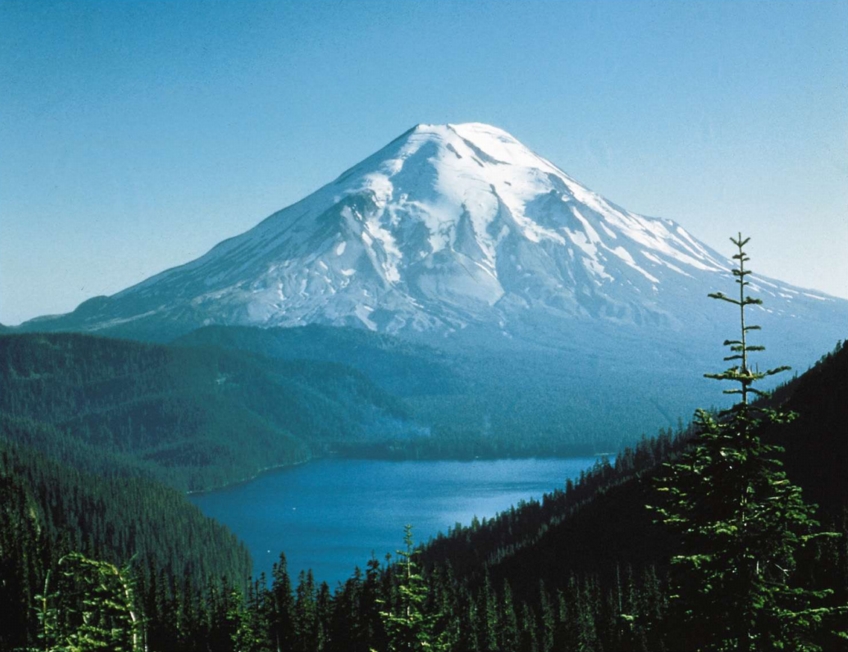
I haven’t spent too much time in the area. I did some research prior to the trip but mostly planned on just exploring and scouting for future trips. My first stop was the Mt. St. Helens Forest Learning Center. It’s one of the many viewpoints on the way to Johnston Ridge Observatory.
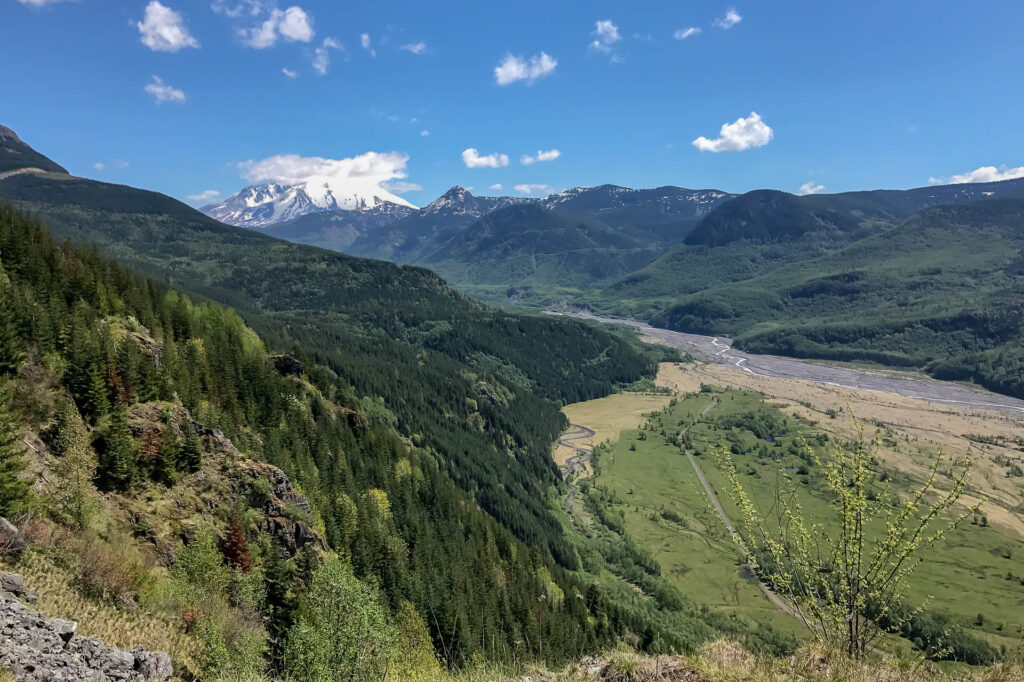
From the viewpoint you can see the valley below that is slowly coming back to life. With a pair of binoculars or strong set of eyes you’ll see families of Elk and other animals.
The next stop on the road is Elk Rock viewpoint. This viewpoint doesn’t offer much choice in terms of perspective and composition. The parking lot is the extent of where you can go and it’s still a bit farm from Mt. St. Helens. I only spent a few minutes here.
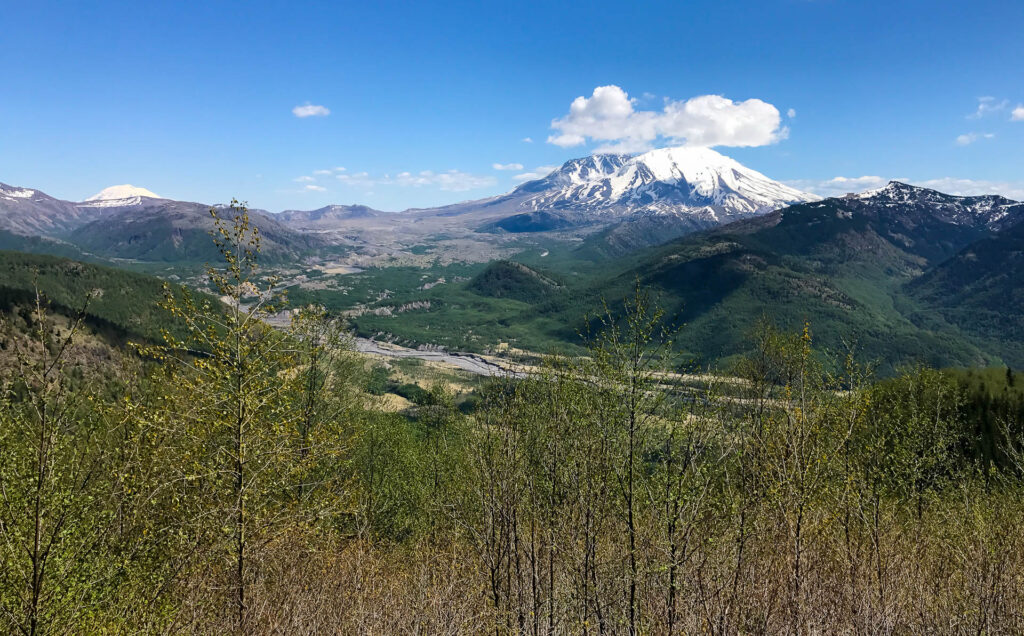
After Elk Rock comes the Castle Lake Viewpoint. This is the first viewpoint where there’s more space and clearing. The parking lot is significantly larger and it’s a popular spot for astro-photography. I would return here later in the day.
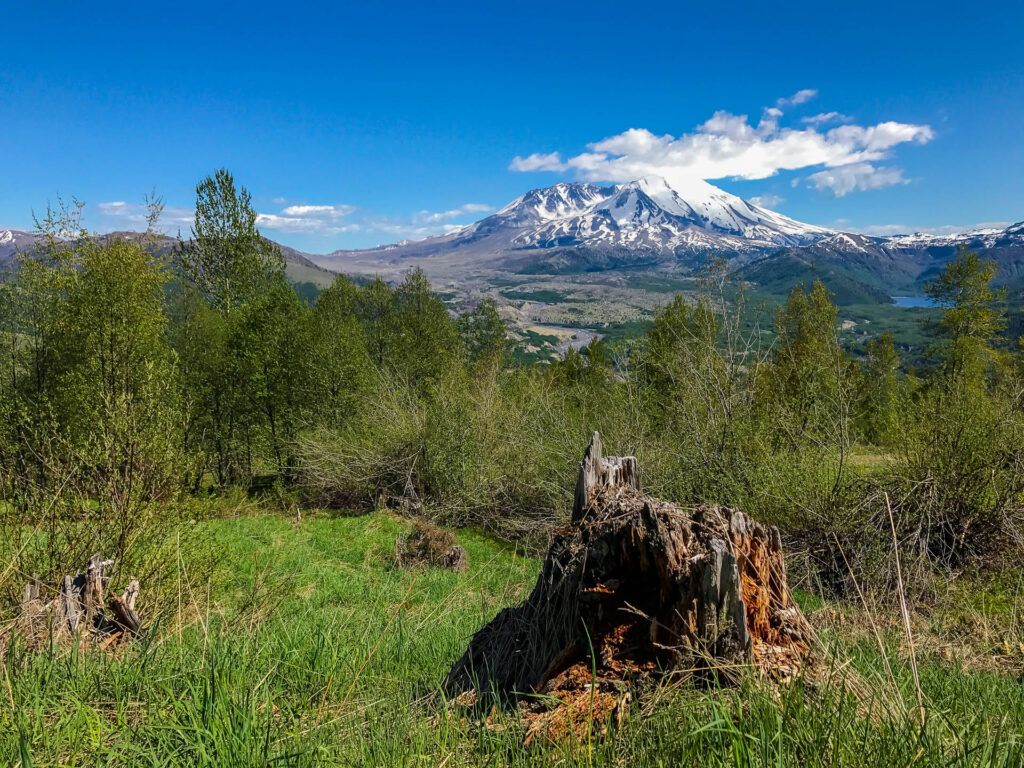
I spent the rest of the afternoon hiking around the Coldwater Lake area. You can start from the Hummocks Trailhead and continue along the Boundary Trail towards Loowit Point and the observatory. The Hummocks trail takes you through the various hills and new growth around the valley area. Here you’ll see lots of flowers, grass, young trees, and the various derbies of rock/mud/earth that the eruption left behind. Around 1/3 mile into the Hummocks trail there is a clearing that overlooks a small lake forming in the hills. Seems like it could be an interesting location for sunset.
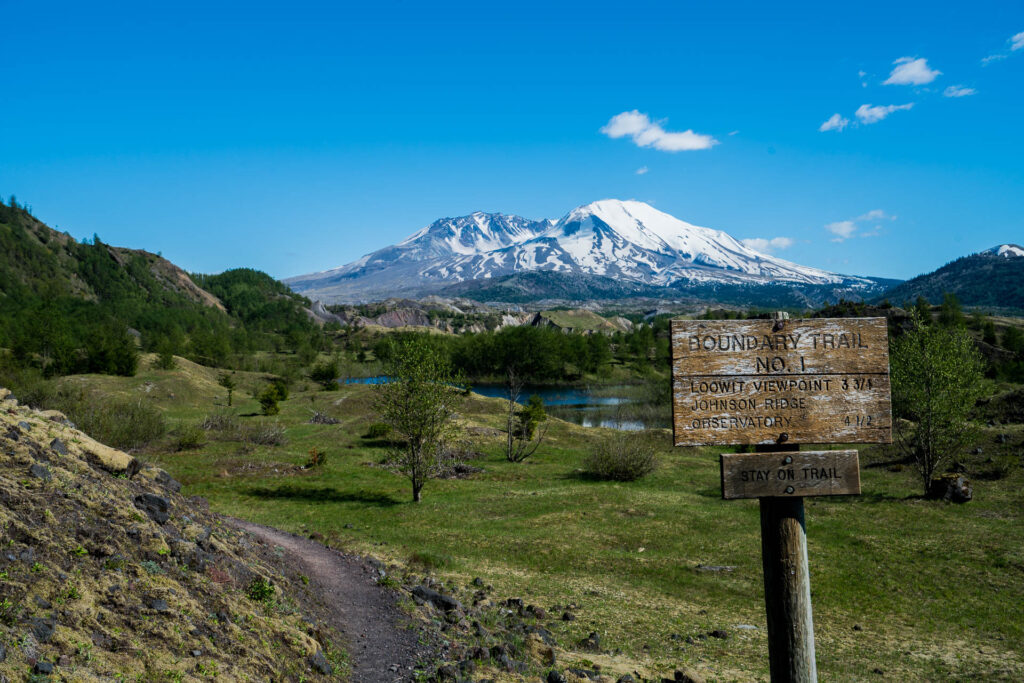
Eventually you reach a fork in trail. One direction takes you on the Hummocks loop (2.3~ miles) while the other takes you up to the Loowit Viewpoint and Johnson Ridge Observatory. I found the trek up to the viewpoint to extremely interesting. As you meander through the partially covered hills and hummocks, the trail takes you through various new growth that seem to be so lush in such a harsh environment.
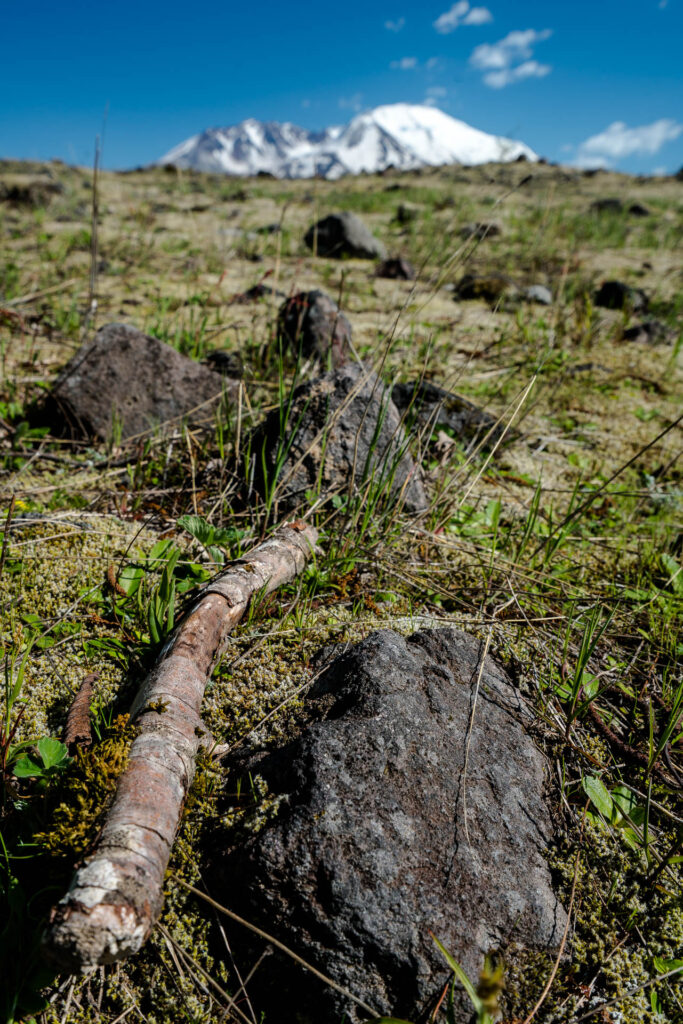
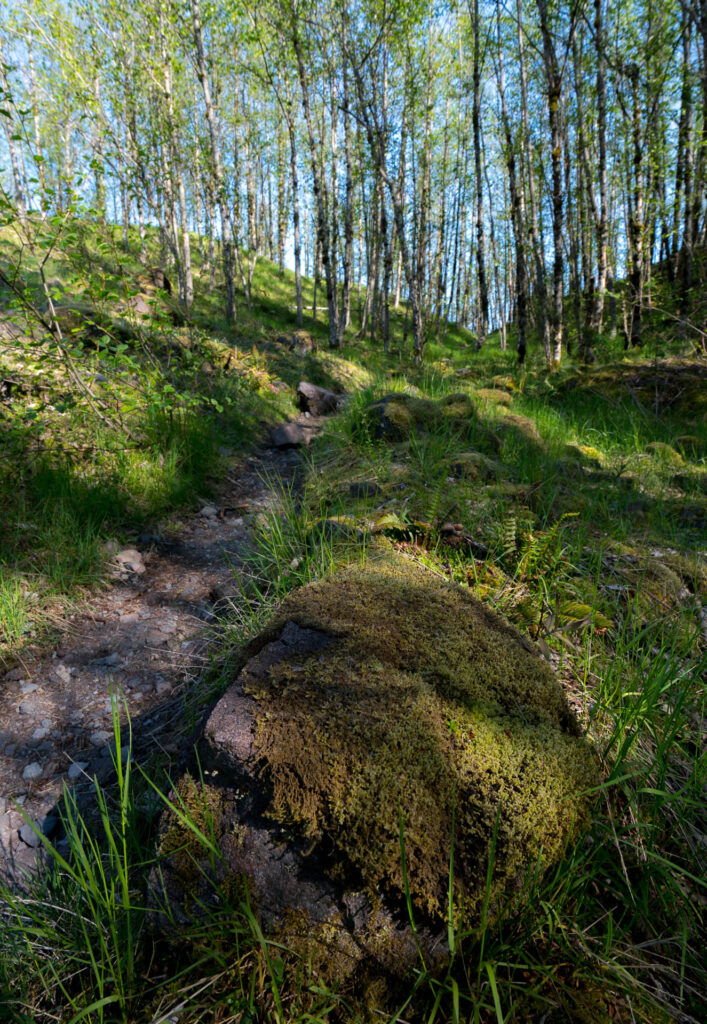
Overall the trail is quite enjoyable and interesting enough to find compositions. It is not too strenuous, although if you are trekking up to the observatory there will be some decent elevation gain.
Photo Trip Rating: 6/10
Hike Worthy Rating: 9/10
After the hike, I returned to Castle Lake viewpoint for sunset. There wasn’t a cloud to be found in the sky – so I settled for looking for some interesting foreground subject and just decided to enjoy the sunset.
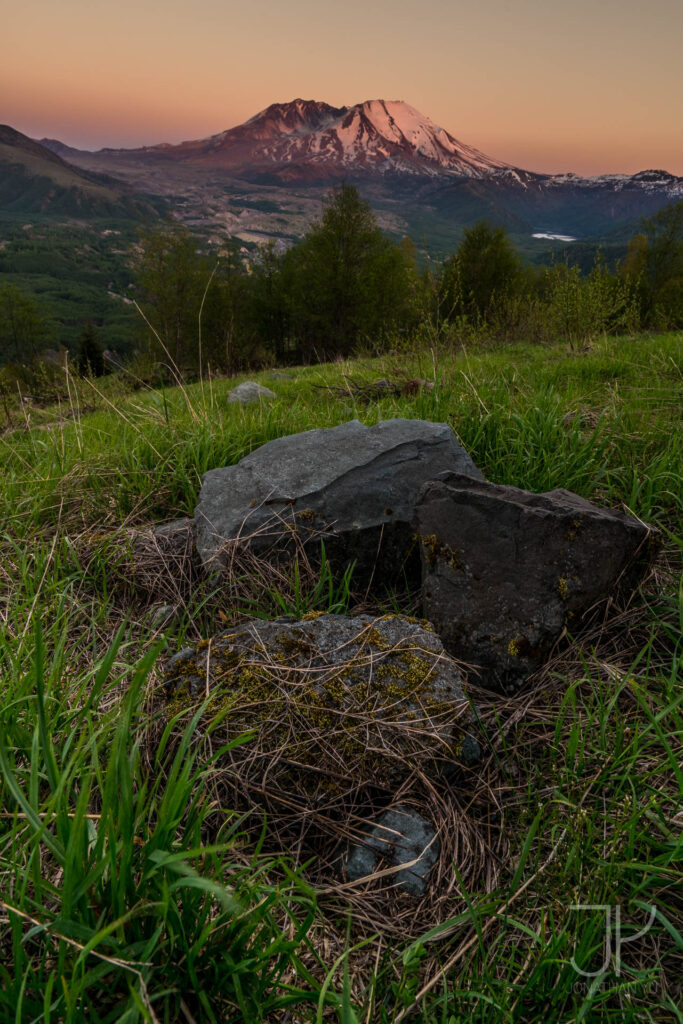
However, not to be disappointed, I decided to stay for the stars. The night was clear and it would a new moon. With the galactic core rising out of Mt. St. Helens at just 12:13 AM it was a perfect night to try my hand at some astrophotography. I opted for my Sony 16-35 F4 in this situation. My Rokinon 14mm is a couple stops quicker but too wide of a lens for the composition I wanted. (Check out my post on all my gear for more info)
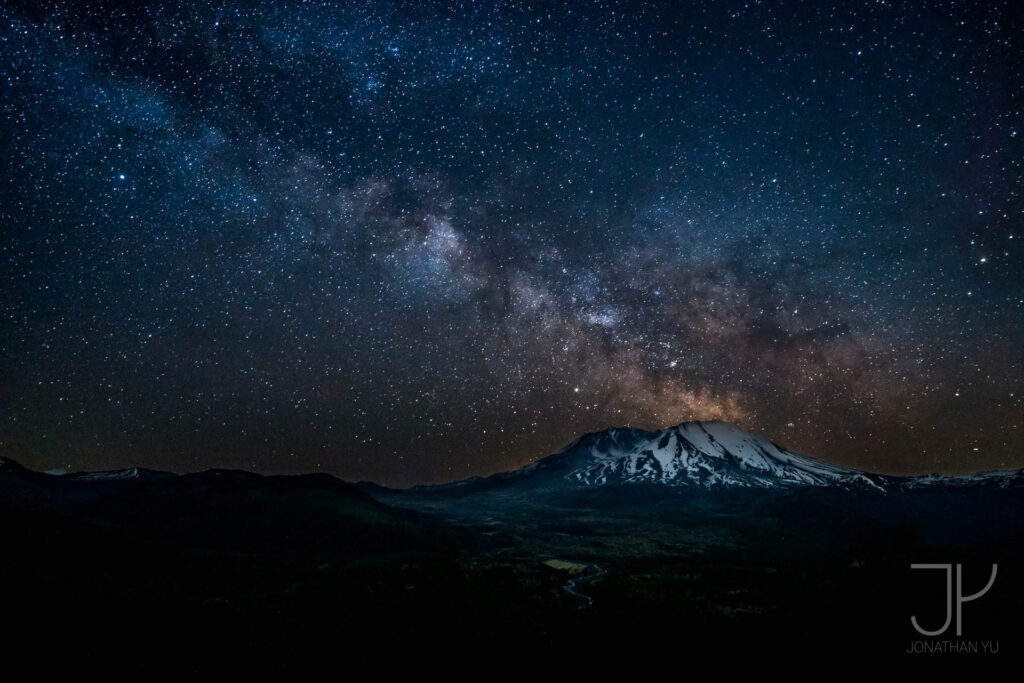
This shot is a blend between two exposures. One 6 minute exposure for the foreground and another 14 second shot for the stars. I’ll have to get out and practice more to get a sharper photo, but I am quite satisfied with the results. The skies are a bit bright the next two weeks but I hope to get out there again for the next new moon.
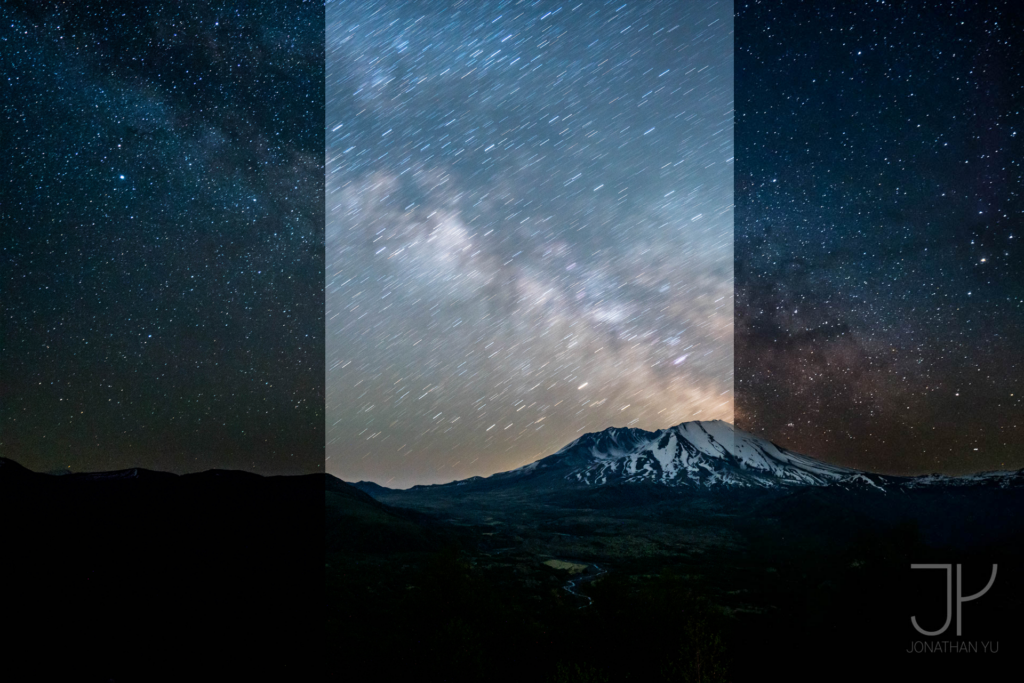
Jonathan
Hey there, I’m Jon! I love landscape photography which is why I travel all the time! On my blog I’ll share all the best spots for epic sunsets and sunrises as well as some photography tips and tricks. I also have a interest in game design so you’ll find the occasional post about that too. Thanks for visiting!
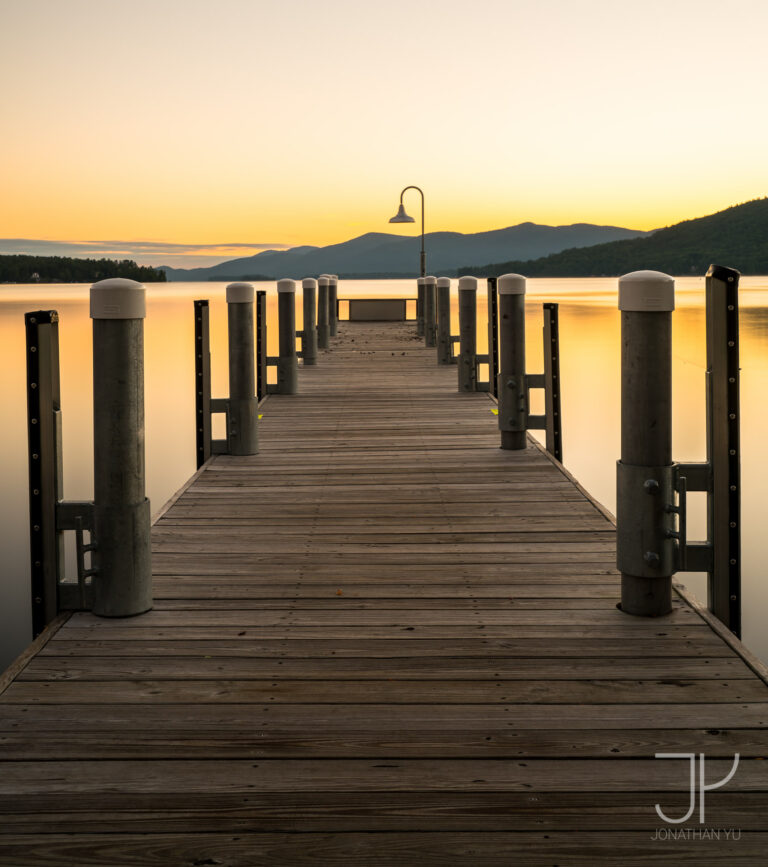
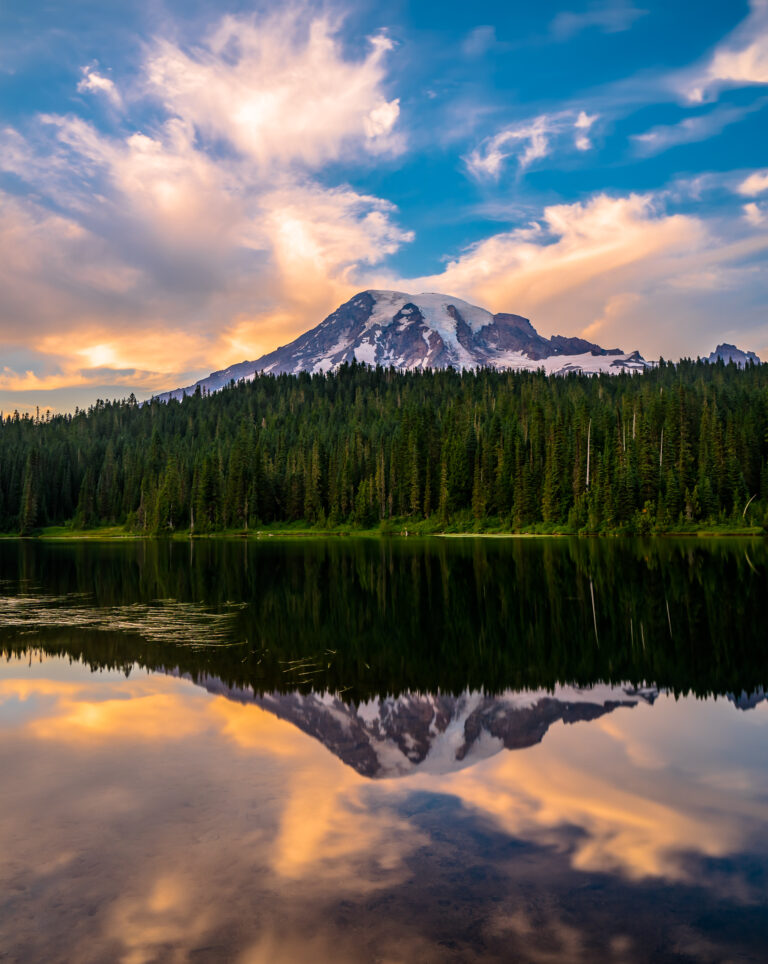
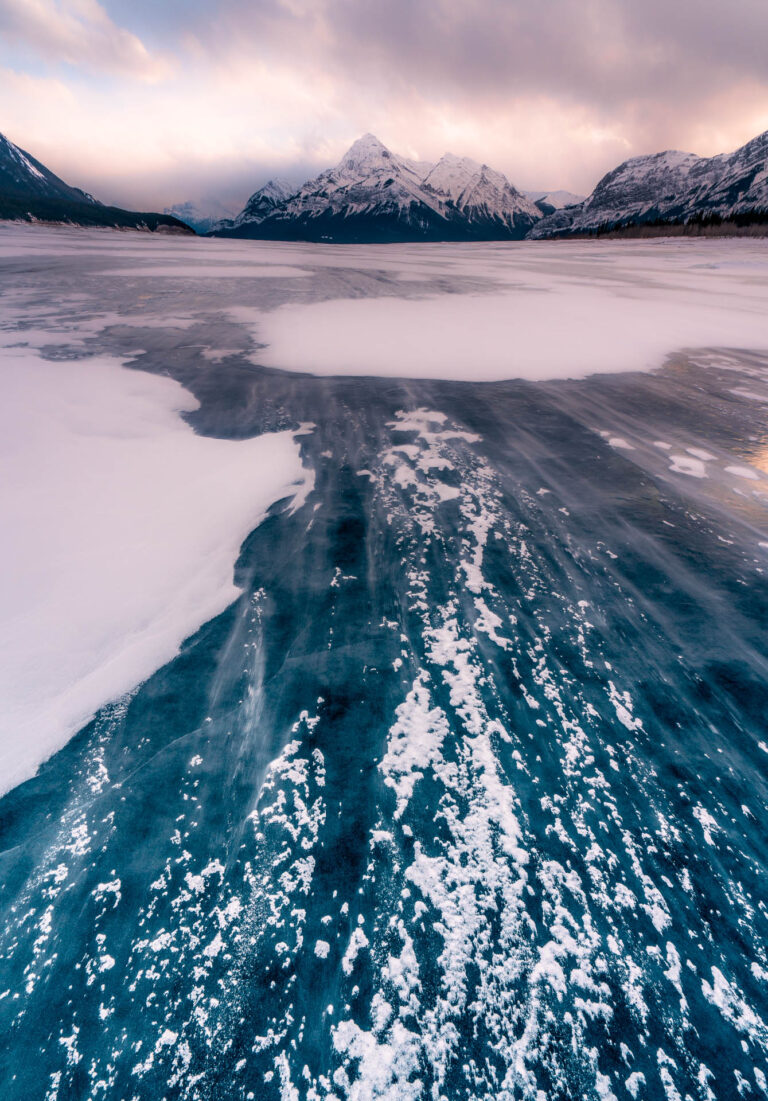
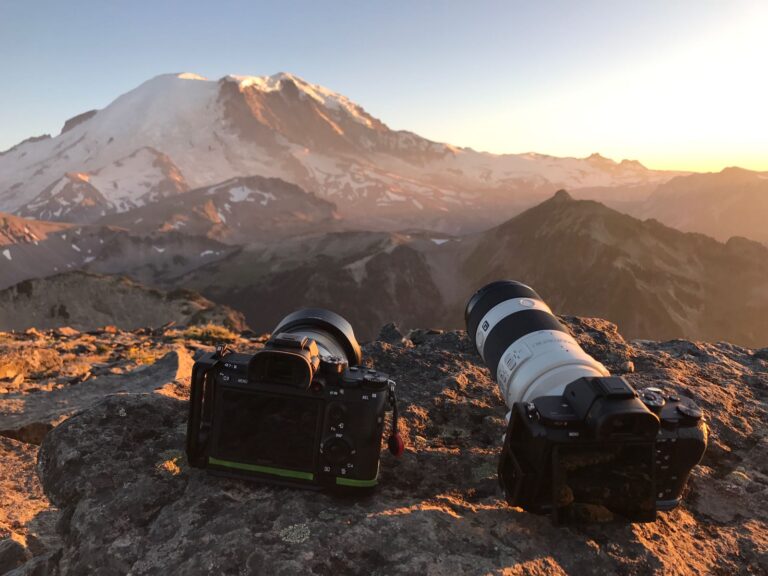
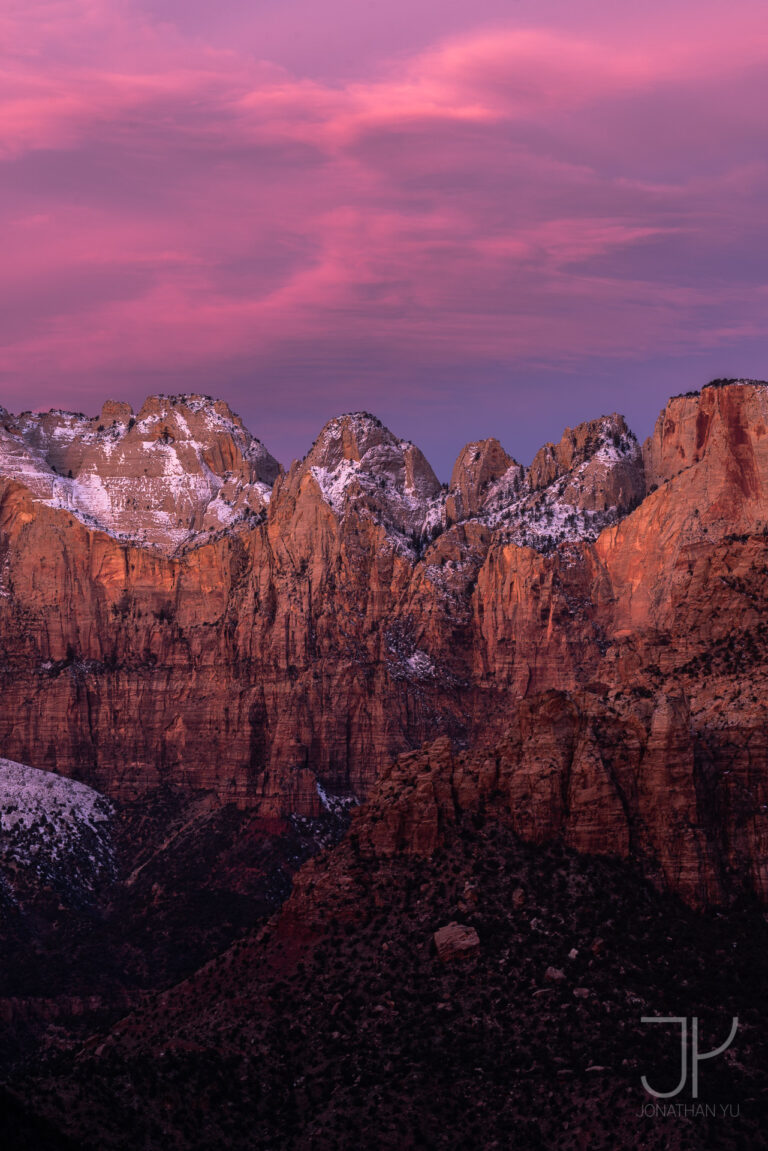
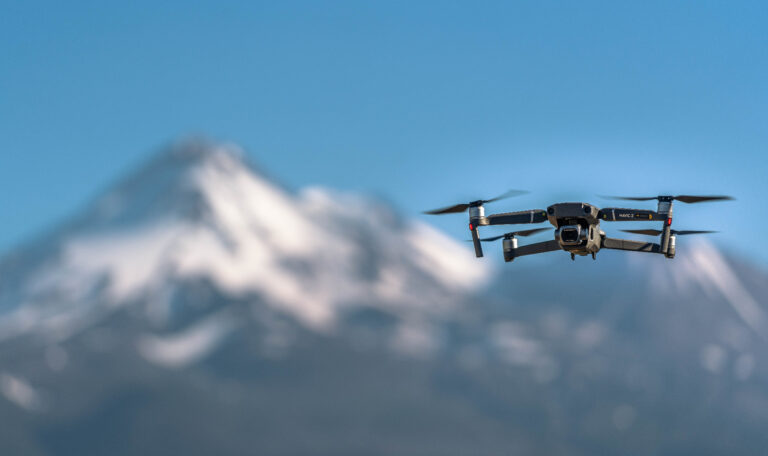
Amazing I’m going to have to make a trip there myself. Thanks for the info!
Happy to share, hope you make it out there 🙂